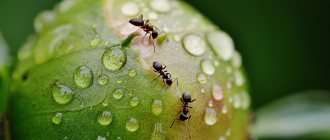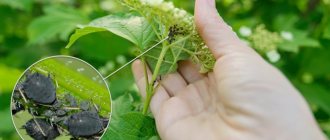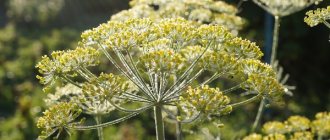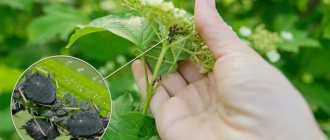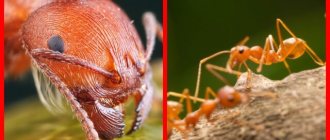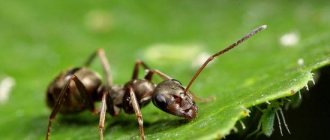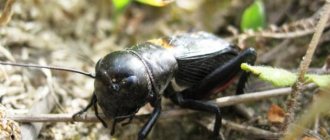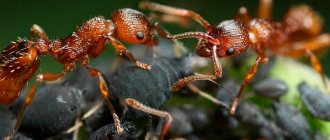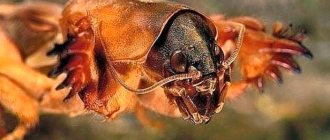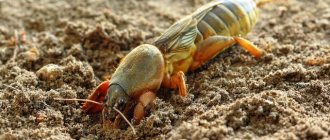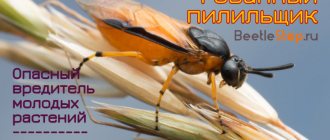The interaction of ants and aphids on garden plants may seem like a pure coincidence to some. In fact, these insects are biologically connected in a very serious and not very pleasant “relationship” for the summer resident. But first things first.
In general, there is an opinion that ants are the most useful insects and one can only be happy about the presence of an anthill on the site, they say, these “orderlies” will exterminate any creeping harmful little thing. But is this really so? Let's take a closer look at the situation.
Are ants and aphids necessary in the garden or is it worth fighting them?
Ants and aphids in the garden, which can be controlled using various methods, can cause enormous damage to the crop. If the number of ants is limited, insects can have a positive impact on the ecosystem of the entire garden.
The benefits of ants are listed in the following list:
- formic acid disinfects feathers of birds, helping to destroy parasites;
- they do an excellent job with slugs;
- increase the volume of minerals and improve the agrochemical indicators of the soil cover;
- capable of spreading celandine seeds with speedwell, thyme and fragrant violet;
- are a source of food for birds.
If the volume of individuals is higher than normal, the negative consequences of their presence in the country will be in the foreground.
The damage that ants can cause if their indicator exceeds the permissible limit:
- by making underground passages, they disrupt the consistency of the soil cover; as a result, the access of air and liquid necessary for plants will be limited;
- aphids appear because of ants;
- gnaw the fruits, making them unfit for consumption;
- Anthills built by insects spoil the decorative appearance of the site, making it unkempt.
All these consequences force us to take measures to quickly remove ants and aphids from the garden. Aphids secrete honeydew, which is consumed by ants.
As a result, the latter provide reliable protection, which is manifested in the following:
- the more aphids absorb from the sap culture, the more sweet liquid there will be;
- Only young plants are capable of providing aphids with a large amount of juice, so the ants make sure that they regularly have food, spreading insects to young and healthy shoots;
- if aphids multiply very quickly, ants begin to eat them, thereby controlling their numbers;
- ants are able to selflessly protect their food source from some birds and insects;
- in the autumn, ants begin to send aphids into the anthill, guarding the adults with eggs;
- in the spring season they send aphids to the surface of plants.
The fight against aphids and ants must be carried out simultaneously, since these insects cannot be alone.
Rules for spraying raspberry bushes
Raspberries are treated against aphids with chemicals. Plantings should be irrigated before flowering and fruit appearance. Crops can be sprayed with Karbofos, Nitrophen, Kilzar. Insecticides are used in 2 stages. Chemical compounds can be used 2 times. This will help completely eliminate eggs and adults.
In spring - during the flowering period
After flowering begins, you should not use chemical compounds. Insecticides will kill flowers and kill beneficial insects. During this period, it is better to use herbal decoctions and tinctures against aphids.
In summer - during fruiting
During fruiting, the bushes must be handled extremely carefully. When ripe berries appear, the use of chemical compounds and fungicides is strictly prohibited. It is not recommended to treat crops with homemade insecticidal plant remedies.
In this case, it is permissible to use a soap solution or use ammonia. Using this method, carefully wipe each affected leaf.
in autumn
After harvesting, it is necessary to prune overgrown stems. Thanks to this, it will be possible to protect the crop from the spread of aphids and improve the yield of the plant.
Reasons for the appearance of pests on the site
Ants and aphids in the garden (they must be dealt with immediately, otherwise they can destroy most of the crop) may not affect the fruits, but due to their presence, the tree begins to lose vitality.
As a result, the crop becomes more susceptible to fungal and viral infections. Afterwards the plant dies.
The reasons for the appearance of aphids on the site may be the following factors:
- failure to comply with preventive procedures related to plant treatment;
- transfer of aphid larvae by people, animals or wind;
- planting crops that were previously infested with insect pests.
The reason for the appearance of ants on bushes and fruit trees is an invasion of aphids. The ants live near the parasite in order to collect a sweet sticky liquid, which they eat themselves and give to the queen and the larvae. Therefore, to eliminate ants, you must first get rid of aphids.
Tips and recommendations from experienced summer residents.
Experienced gardeners advise remembering that if you destroy all the ants, the ecological balance will be disrupted. The ants will be replaced by more dangerous pests, the numbers of which were kept in check by the presence of the ants.
Therefore, gentle methods of control are recommended aimed at curbing the growth of the number of ants, and therefore aphids:
- plant plants that repel ants (cloves, tansy, valerian, marigold);
- the stems and leaves of these herbs are tied around the trunks of bushes and trees;
- use improvised means to repel insects (bone meal, soda, cinnamon);
- They use barrier methods (catching belts, adhesive tapes, hemp oil barriers) that do not allow ants to crawl through trees to reach aphids; without their protectors, small pests become prey for predators.
Signs of appearance on plants
Ants and aphids in the garden, which can be combated with various sweet and aromatic baits, can destroy most of the plants growing in the country if measures are not taken to eliminate them. To prevent aphids from appearing in your garden, you should constantly inspect the area.
The main signs of the presence of a pest in the garden:
- The presence of an anthill directly on the site or near it. Ants always move with aphids and, when choosing a habitat, begin to spread the pests to nearby plants.
- Curled black currant foliage. In most cases, the plant becomes the first target for aphids to walk on. If insects are detected, it is necessary to begin immediate pest control.
- The foliage became dull. This happens when there are a large number of aphids on the plant, which cover the entire surface of the leaf blade.
- Deformation of young shoots. This sign indicates the presence of a disease in the plant, which is caused by aphids.
- Sticky coating on leaves and stems. Aphids secrete honeydew at 2-minute intervals. Most of the substance coats the plant and then quickly kills it.
The main signs of ants appearing in the garden:
- in their presence, the acidity of the soil begins to increase, which is destructive for most types of cultivated plants;
- anthills appear near various food sources, so they can be found near strawberries or near root crops;
- if the colony grows to a large size, the insects begin to run out of food, so they will eat berries and vegetables that contain large amounts of sugar;
- in some cases, ants can damage seeds and sown material, because of this the future harvest noticeably suffers;
- very often insects feed on weed seeds - as a result, the entire area of the garden is quickly contaminated with grass.
Why are aphids dangerous?
Let me start with the fact that there are a lot of types of aphids. Black, green, gall aphids and many others. In one season, one individual can produce up to 5 generations. If you don’t fight it, then your plantings will be in trouble. But whether this pest is so dangerous that the use of potent chemicals is necessary is a big question. The fact is that aphids have a huge number of natural enemies who happily feed on them. By and large, aphids are dangerous only in early spring, when young leaves and shoots appear, which they easily pierce with their proboscis, feed on the cell sap of the plant, gradually weakening it. Special attention should be paid to the “friendship” of aphids with ants. There is a common myth that it is ants that carry aphids. This is wrong and I will tell you why at the end of the article. In the meantime, let's talk about ways to get rid of the invasion of these voracious guests.
Fighting methods
It is possible to fight aphids and ants in the garden using various methods. To do this, you can use aromatic and sweet bait traps, various chemical or folk preparations. Any remedy will have an effect. However, in order to eliminate a small population of insects, it is advisable to use folk compositions. To destroy huge colonies, it is better to use chemicals.
Chemicals
Chemical synthetic compounds are not dangerous for animals and people. They do not harm the crop and soil cover. However, they completely destroy insect pests.
The following drugs are considered the most popular against ants:
| Name of the product | How it works |
| Grom-2 | Allows you to destroy a large anthill and protect crops. Used in the form of small granules. It is necessary to treat areas where a huge volume of pests is concentrated. You will need to remove a 3-centimeter layer of soil. Afterwards, you need to spread the granules evenly, sprinkling them with turf. |
| Ant-eater | The composition will not accumulate in the soil cover and harm mammals with worms. The drug cannot be used to treat seed material and roots of seedlings. To treat 5 m2, you will need to dilute 1 ml of the substance in 10 liters of liquid. |
| Ant | The insecticide is presented in granules that help quickly get rid of black ants. The granules need to be scattered near the fruit trees. However, the drug should not get on the fruit or trunk. For 1 m2 you will need 3 granules. |
| Muratsid | Suitable for processing flower beds, beds and paths. The drug can be used to treat cultivated crops without harming the crop. It can be presented in the form of an aqueous emulsion or powder. The drug will be effective for 4 months. |
| Clean house | It is a gel-like insecticide used to treat secluded places and narrow crevices. The drug contains a toxic substance that has a nerve-paralytic effect. The product must be applied to a board or piece of cardboard and placed near the anthill. |
When using chemicals, it is recommended to use gloves and a respirator. If the instructions do not indicate that the drug is safe for mammals and soil cover, animals and people should not be on the site.
When fighting aphids, the best insecticides are those that give an immediate effect. However, they cause harm to both the individual and the culture. Treatment must be carried out in the spring before flowering or in the autumn after harvesting.
The toxic substances contained in the preparations are concentrated in plant tissues. When the insect comes into contact with the sap, the poison enters their body. The composition begins to block the parasite's nerve impulses, causing paralysis and death. If the weather is dry outside, the effect of insecticides will last more than 20 days.
The following are considered common remedies against aphids:
- Aktara;
- Biatlin;
- Intavir;
- Spark;
- Commander;
- Confidor.
When using medications, you must strictly adhere to the instructions indicated on the product.
More gentle remedies for aphids are biological products. They are biological compounds created on the basis of organic substances. The latter are the waste products of microorganisms, bacteria and fungi.
Processing can be carried out at any time. After completing the procedure, you need to wait approximately 5 days. Afterwards you can eat fruits and berries. The result will be noticeable after 10 days.
The following products are considered widely in demand:
- Akarin;
- Aktofit;
- Spark Bio;
- Arrow;
- Fitoverm;
- Fufanon.
Biological preparations can be used to treat fruit, berry and vegetable plants.
Folk methods of struggle
Most traditional methods are not capable of destroying a colony of ants in the garden for a long period of time. All of them have an exclusively preventive effect, which is designed to prevent their reappearance on the plantation. However, some of them also work for direct pest control.
Recipes for folk remedies to fight ants:
- Ammonia and water. Add 10 ml of ammonia to 1 liter of water and mix well. You will need to pour the mixture into the anthill and the plants at the root. The composition will not only help get rid of pests, but also give the crop an additional portion of nitrogen.
- Forced migration. To do this, you need to find an anthill of forest ants, dig it up and move it to your plot of land. You can transport it in a cardboard box or a thick bag. It must be located next to the one from which the task is to get rid of. Forest insects will begin to fight with the inhabitants of the garden. After the victory, they will go back to the forest, since the conditions for their life in the garden plot are unacceptable.
- Semolina or flour. The more decoy there is around the anthill, the better the end result. When eating cereal or flour, the ants begin to swell, which leads to the death of the insect. Treatment should be carried out exclusively in dry weather and the area should not be watered for some time.
- Ladybugs. Ladybugs feed on aphids, but are safer for plants because they do not breed aphids. Plants such as yarrow, dill, tansy, dandelion and buckwheat can attract insects. Therefore, they will need to be planted on the site to obtain a good result in the fight against ants and aphids.
- Strong smell. The pungent odor produced by plants such as garlic, parsley, wormwood, calendula and mint can repel ants. All plants can be planted around the perimeter of the site or around the beds. Ants will never want to settle near them if there is a strong aroma.
- Another type of ant. If you purchase several worker ants of an aggressive type, you can solve the problem. They should be placed in an anthill so that they quickly drive out a colony of weak insects. They themselves will not be able to reproduce, since they do not have a uterus.
- Boric acid and sugar. To a 500 ml volume of boric acid you need to add 500 g of sugar. The solution should be treated with the anthill, soil layer and trees. Sweet syrup will attract insects, but boric acid will kill them.
- Salt and boiling water. Salt in an amount of 1 kg should be diluted in 3 liters of boiling water. Afterwards you will need to pour the liquid into the anthill. It is recommended to carry out the procedure after sunset, when the bulk of insects have gathered in the anthill.
There are several ways to combat aphids:
- Tobacco. Tobacco or ash must be crushed into dust, diluted in water and sprayed onto the surface of the plants. For 1 liter of liquid you need 2 g of the substance. Treatment should be carried out 2 times a day.
- Vinegar. The plant on which the aphids are located must be treated with a solution based on 15 ml of vinegar and 1 liter of liquid.
- Soda. You need to dissolve soda and 1 tbsp in water. l. soap, treating damaged plants with the mixture. The method can help if there are only a small number of insects on the plant.
- Fumigation. Aphids cannot tolerate the aroma of smoldering straw, celandine, tobacco and bird cherry. The procedure should be carried out in calm weather, placing small piles with the above components between the beds.
- Burdock. Crushed burdock leaves should be soaked in water for 3 days, and then a pest control tincture should be used. The plant should be treated once a week.
The methods listed above are not capable of causing harm to trees or shrubs. They can be used at home. They are completely safe for humans and animals and very effective against parasites.
Lures
To combat ants, it is permissible to use the following baits:
- It is necessary to make honey liquid. To do this, dissolve 25 g of honey in 1 liter of water and moisten the sponge generously with the mixture. Such baits need to be placed in places where ants accumulate. After some time, you will find a large number of insects on the sponge, which will need to be thrown into hot water.
- Fill a glass or tin jar with a sweet solution based on sugar and honey. The containers will need to be placed around the anthill. After some time, some of the ants will die, and some can be killed yourself by pouring the contents of the jars into boiling water.
- Hot liquid in an amount of 50 ml must be mixed with 50 g of sugar, 1/3 tsp. borax and 5 g of honey. The poisonous bait will need to be placed near the anthill and updated daily.
- You need to mix 0.5 tsp. borax and 50 g of minced meat. Poison balls should be placed in areas where pests live.
- 5 g of jam will need to be mixed with 14 g of fresh yeast and cool water to the consistency of sour cream. The mixture should be coated with pieces of cardboard or plastic and placed on the ant paths.
- Boric acid in the amount of 1/3 tsp. must be mixed with 50 ml of warm water, 25 g of sugar and 5 g of honey. The container with the resulting bait must be placed in the garden near the anthill. After 2 days, you need to make a new mixture. Insects will be attracted by the sweet smell of the product, dragging it inside the anthill, they will poison all its inhabitants.
- To make bait, mix yeast with sugar and warm water in equal proportions. The mixture must be placed near the anthill, and after 2 days it must be replaced with a new one. The yeast, having begun the fermentation process, will destroy all ant reserves.
When fighting aphids, gardeners use bait plants. They can be flowers, small trees, shrubs, which can attract aphids with their smell.
Plants that can act as bait are listed in the following list:
- Basil. It has a persistent and strong odor. Since aphids love to feast on natural elements, this plant contains a caustic substance. As a result, the insects' sense of smell is impaired and digestive problems arise. With the help of basil, you can remove parasites from legumes, asparagus, eggplants, melons, rice and zucchini, as well as tomato bushes.
- Nasturtium. Aphids really love the smell of these flowers, which can attract them. But soon the insects die.
- Rosemary. It will help protect crops such as beans, potatoes and vegetable seedlings. When rosemary leaves are pruned, essential oils are released in the form of a pungent odor that can destroy the insect’s nervous system.
Additional folk recipes
In addition to generally accepted folk methods of pest control, you can get rid of ants on honeysuckle using various decoctions and infusions. Next we present these recipes.
Tobacco infusion
To make a tincture, simply pour 12 liters of cold water into 500 grams of tobacco. Then the tincture must be left for three days in a cool, dark place. Before watering the soil, pass the mixture through a sieve to remove debris.
Tobacco decoction
The tincture is prepared by mixing 500 grams of tobacco powder and 12 liters of boiling water. Leave in a sealed container for two days. Be sure to place the vessel in a dark place. After 48 hours, strain the resulting mixture and add another 12 liters of water at room temperature. To enhance the effect, add grated laundry soap (50 grams) to the resulting mixture.
Horse root infusion
The product is infused for 3 hours, and immediately after that it is ready for cultivating the land around the raspberry bushes. Method of preparation: 500 grams of root are crushed and filled with 14 liters of water at room temperature. Leave for 3 hours. Be sure to strain.
Yarrow decoction
Cooking recipe: Water (12 liters) + grated tar soap (50 grams) + dried yarrow (1 kg). Water and herbs are boiled for half an hour. After cooling, soap is added. Use chilled and strained.
Infusion of medicinal dandelion
Dandelion leaves (500 grams) and roots (400 grams) – chop and add 40-degree water. Leave for 2-3 hours. Strain and can be used to process raspberry bushes.
How to restrict access to trees or beds
Ants and aphids in the garden (you need to start fighting them in the early stages, while their numbers are small) are a source of disease and withering of cultivated plants.
The figure lists measures to prevent the appearance of ants and aphids in the garden.
However, it is possible to limit insects' access to trees and beds by doing the following:
- the inside of the sheepskin should be coated with carbolic acid, wrapping raspberry or currant bushes with the wool facing out;
- dig in the ground, cover them with clay and fill them with water;
- wrap the tree with roofing felt, covering it with glue on top;
- wrap tree trunks with adhesive tape, securing them with rope;
- You will need to put a car tire cut in half on a small tree trunk and fill it with water;
- make a fence with pointed edges from a plastic bottle.
Fungicide treatment
Chemicals quickly destroy all types of aphids, regardless of their stage of development. The process requires compliance with safety precautions and sanitary standards.
Spark
There are several drugs on sale:
- Iskra Bio – against aphids, mites. It is characterized by increased safety, is used before berry picking, and is effective in hot weather. Solution: 60 ml per 10 liters of water. Consumption: 1.5 l per bush;
- Spark Double effect is a universal tablet product. Non-toxic, fast-acting, contains potassium supplement. A working solution of 1.5 liters is sprayed for every 10 sq.m. raspberries;
- Golden spark is highly effective, provides long-lasting protection, and is not washed off by rain or watering. Solution: 5 ml of emulsion or 40 g of powder per bucket of water. Consumption: up to 10 liters per hundred square meters, depending on the number of aphids. Not for use on fruit;
- Iskra M – successfully works against aphids, sucking and gnawing insects. Compatible with fertilizers and many pesticides. Dissolves in water in a ratio of 10 ml per 10 l. Spraying is carried out in 2 stages - before flowering and after picking berries. Does not work on mature fruits. Consumption – 2 liters per 10 bushes.
Confidor
A new generation systemic drug will provide protection against aphids and other pests for a 30-day period. One or two sprayings are required per season. The asset of the product is safety and inability to accumulate in fruits. But, the solution is not sprayed during the ripening period of the berries and during the early harvest (no later than 30 days). Available in the form of a concentrated emulsion, wettable powder.
- Confidor “Extra” and “Maxi” work against aphids;
- concentration – 70 g of powder or 1 ml of emulsion per 10 l;
- with a large concentration of pests, the consumption doubles;
- For a bush up to 1 m, 1.5 liters are consumed, above 1 m - 3 liters.
Important! When spraying, wear a plastic raincoat from head to toe, with a hood with an elastic band around the face, a respirator, rubber boots, and gloves. Process raspberries in calm weather.
How to withdraw forever
Ants and aphids in the garden (you don’t have to fight them if you regularly carry out preventive procedures) can disappear forever if you take a comprehensive approach to solving the problem. It will be easier to stop the settlement of insects on the site than to deal with their expanded population in the future.
To do this, the following is recommended:
- pulled grass should not be left in the garden, as it can cause aphid larvae to appear;
- plant repellent crops on the site;
- use insects that will eat aphids;
- the root system and the area around tree trunks must be treated with a steep limestone solution;
- It is undesirable to use an untested soil composition for planting, since it may be infected;
- new seedlings must be quarantined to prevent infection of old plants;
- clean the garden of food residues and unnecessary trash;
- constantly inspect the outer side of the leaf blade for the presence of parasites;
- prevent the risk of aphids;
- regularly dig or loosen the soil cover;
- the walls of the greenhouse should be treated with disinfectants;
- remove weeds throughout the site, including in the greenhouse.
Since it is not always possible to detect insect colonies in time, it is quite difficult to fight aphids and ants in the garden. As a result, many plants begin to get sick and die. However, if you adhere to a number of preventive measures, you can reduce the number of pests and completely remove them from the site.
Chemicals
Chemical repellents for aphids When there are a large number of insects on a plant, the pest cannot be controlled without chemicals. They should be used before buds open and flower, or after the last berry picking. The most effective drugs are:
- Aktara remedy;
- Aktellik;
- Inta-Vir;
- Kinmiks;
- Karbofos;
- Fitoverm;
- Spark;
- Tanrek;
- Fufanon.
To preserve the harvest, these products are diluted according to the instructions and sprayed on the raspberries using a spray bottle. Treatment is usually carried out on a dry, windless day.
